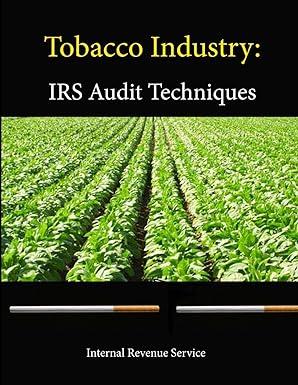Question
Report Task Ecological Footprint Calculating your own ecological footprint is not just generating a number. It is generating an understanding of why we require so
Report Task Ecological Footprint
Calculating your own ecological footprint is not just generating a number. It is generating an understanding of why we require so many resources (ecological services). We can all use the Ecological Footprint calculation to try and determine ways to reduce our resource need/consumption. In other words, it is a tool we can use for planning towards sustainability.
This Task has 2 parts:
Part A - Case Study
Part B My Ecological Footprint Calculation
You will produce a brief report with images and diagrams as appropriate. Include a title page, an introduction, a conclusion, and a reference list.
Part A Case Study
For Part A of this report, you will analyze one of the four scenarios below. Use information from the lesson and/or a footprint calculator (see document Ecological Footprint Calculators for some options).
For each scenario, answer the following questions:
1. Identify the habits or practices the person has that lowers their ecological footprint. Also identify what the person does (intentionally or not) to make their ecological footprint bigger.
2. For each scenario, give some examples of what can they do to improve their ecological footprint?
Here are the scenarios:
A Louise is a student who lives in Ottawa with 3 other friends in small house. She lives close to both work and school and generally walks or cycles everywhere. She eats a mixture of fresh and pre-packaged (convenience) foods. She eats meat occasionally. She and her roommates dont have much control over the energy bills and they dont try to conserve energy. Their bills are average and the energy comes from a non-renewable source. They produce an average amount of waste and always recycle. Her holidays are spent at home with her family an hour away in Perth, Ontario.
B John lives with his partner in an old house in downtown Montreal. Its a beautiful historic building with high ceilings and old windows. As a result, his heating and cooling bills are very high but he doesnt mind because the place worth it! They are not particularly concerned with conserving energy and they get their energy from a non-renewable source. They produce an average amount of waste but usually forget to recycle. John tries to walk when he can, but has to use his car to commute every day. His commute is about an hour each way. He and his partner are eat meat occasionally and they try to get most of their fresh food from local farms when its in season. Every year they go on an adventure holiday abroad and this year they are planning to go to India.
C Harry lives with his family (partner and 2 children) in a big house in the suburbs of Vancouver and as a result their heating and cooling bills are quite high. The family is very busy and they are always taking their family van to get from one activity to the next. The children have been learning about environmental issues at school and have encouraged the family to reduce their waste and always recycle. They also buy their electricity from renewable sources and are learning how to conserve energy. They have a hectic schedule and as a result they eat a lot of pre-packaged (convenience) foods and they eat meat regularly. They love to fly and spend their holidays exploring different parts of Canada and the US.
D Julia lives with her parents and two brothers in the country near Picton, Ontario. They grow a lot of their own food and buy the rest from local farmers when they can. As a family they love to cook good, fresh food with meat at most meals. They live in a large farmhouse and it is hard to keep their energy costs down. Their bills are high but their electricity comes from renewable sources. Brianne works about an hour away and drives back and forth at least five times a week, often six. They dont have regular recycling pick-up at home and they produce a lot of garbage between the five of them. They go on holiday once a year to visit family in France.
Part B My Ecological Footprint Calculation
For Part B of this assignment, you will calculate your personal ecological footprint and identify three (3) things you can do to reduce your Ecological Footprint.
1. Calculate your personal ecological footprint.
a. Many of you completed this during weeks 9 and 10. You may wish to revisit the lesson and/or The Global Footprint Network website (http://www.footprintnetwork.org/).
b. Note: See attached document (Ecological Footprint Calculators) to find a variety of ecological footprint calculators available online.
2. What is your ecological footprint? How many Earths would be required to support the population if everyone had the same level of consumption as you? Were you surprised by the result? What did you learn about yourself when calculating your footprint? (Approx. 2 paragraphs)
3. Recalculate your footprint using different variables (keep them reasonable!) that will reduce your impact on environment. Discuss this re-calculation and include which factors you changed. Compare these results with your first calculation. (Approx. 2 paragraphs)
4. Using this information, identify at least three (3) things you can do to reduce your ecological footprint. Try to make them achievable and realistic for your lifestyle. Discuss the changes you could make in your life right now to execute this plan. Is there anything you arent you willing to do to reduce your footprint at this time? (Approx. 2 paragraphs)
Step by Step Solution
There are 3 Steps involved in it
Step: 1

Get Instant Access to Expert-Tailored Solutions
See step-by-step solutions with expert insights and AI powered tools for academic success
Step: 2

Step: 3

Ace Your Homework with AI
Get the answers you need in no time with our AI-driven, step-by-step assistance
Get Started


